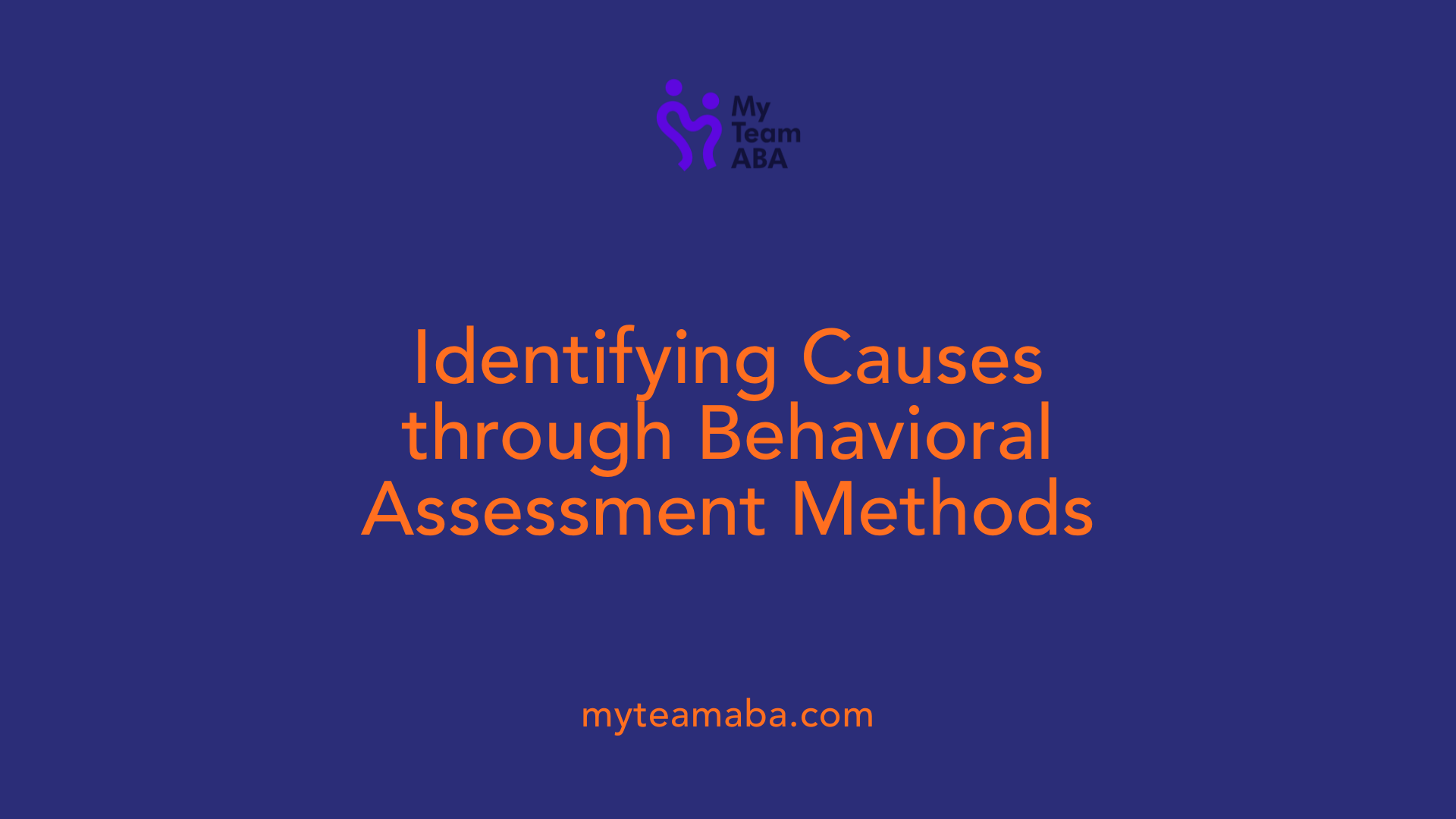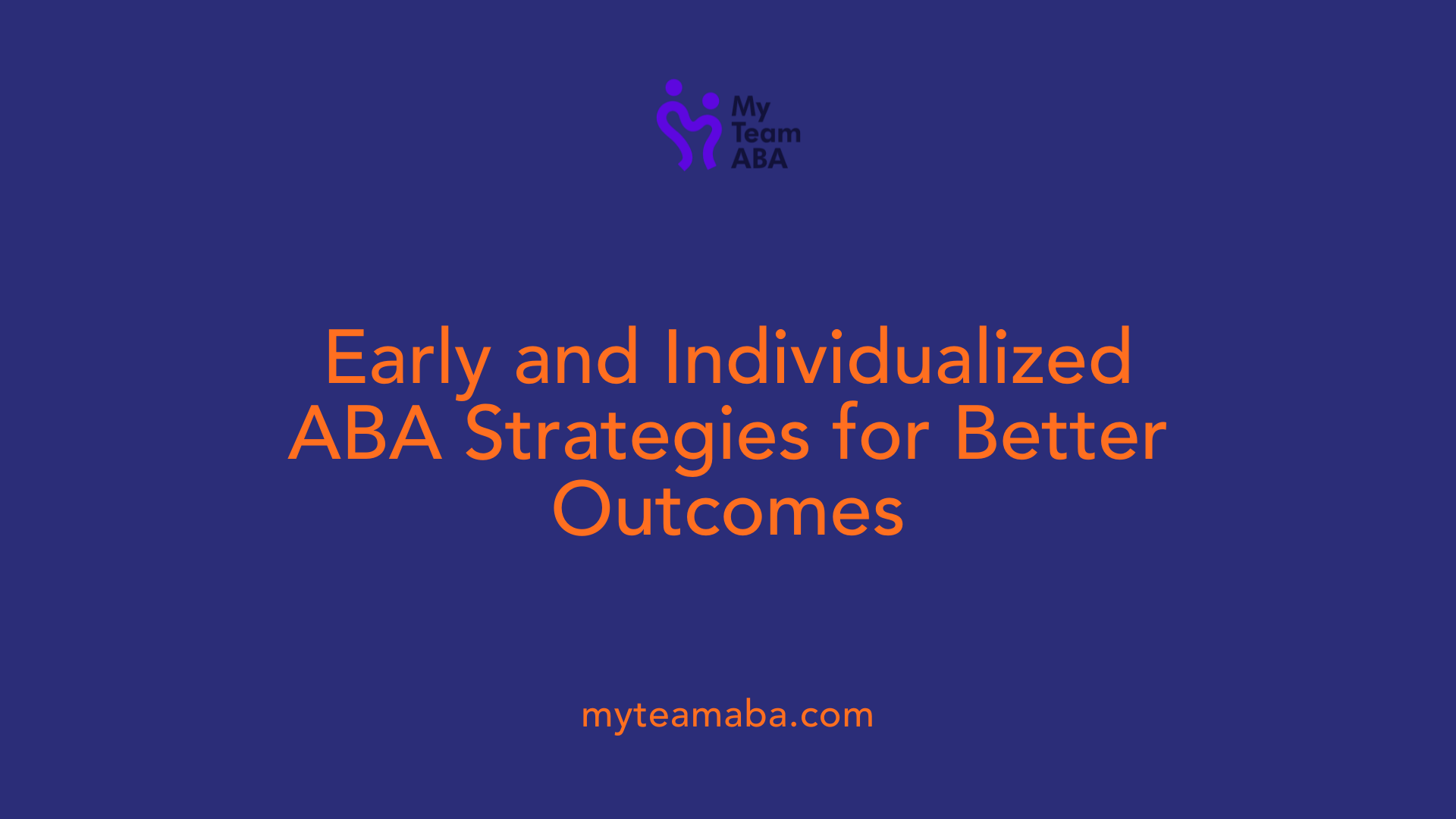The role of ABA therapy in managing non-compliance in children
July 18, 2025
Harnessing ABA Strategies to Foster Compliance in Children

Understanding ABA’s Impact on Child Non-Compliance
Non-compliance, characterized by children doing anything other than what has been requested, is a common challenge for parents and caregivers, especially among children with developmental disorders such as autism spectrum disorder (ASD). Persistent non-compliance is linked to future psychiatric issues and is often cited as a primary reason for seeking behavioral or mental health intervention. Early and effective management of non-compliance is crucial for fostering adaptive skills and ensuring safety. Applied Behavior Analysis (ABA) offers a systematic, personalized approach grounded in behavioral science principles to address these challenges, emphasizing proactive strategies, positive reinforcement, and data-driven decision-making.
Core Principles of ABA and Their Application to Non-Compliance

What are the core principles of ABA therapy and how are they applied to managing non-compliance in children?
Applied Behavior Analysis (ABA) is grounded in several fundamental principles that guide effective intervention strategies for managing behaviors, including non-compliance. These principles include reinforcement, antecedent modification, functional behavior assessment (FBA), and data-driven decision making.
Reinforcement is used to strengthen desirable behaviors, such as compliance, by providing positive consequences like praise, tokens, or preferred treats when a child follows instructions. This encourages the child to repeat compliant behavior in the future.
Antecedent modification involves adjusting environmental factors to make compliance easier and more likely. For example, giving advance notice of upcoming changes or tasks helps children prepare and reduces the likelihood of non-compliance.
Functional Behavior Assessment (FBA) is a systematic process to identify the reasons behind non-compliant behaviors. Understanding whether non-compliance is due to attention-seeking, sensory issues, or task difficulty allows for targeted interventions.
Data-driven decision making means continuously collecting information on behavior patterns and response to interventions. This process ensures that strategies are tailored to the child's needs and are adjusted based on progress.
In practice, these principles are applied through individualized treatment plans that include techniques such as prompting precursor behaviors, guided compliance, and differential reinforcement. For example, therapists might break down instructions into smaller steps, provide clear cues, and reinforce even small efforts to promote compliance.
Strategies like providing choices, linking activities to the child’s interests, and reinforcing compliance help motivate children while reducing frustration. Consistent implementation by parents, teachers, and therapists, combined with ongoing data collection, enhances the likelihood of successful behavior change.
Overall, ABA focuses on understanding the function of non-compliance and proactively addressing it with positive, structured approaches. This helps children develop essential compliance skills, leading to better learning outcomes and reduced challenging behaviors.
Behavioral Assessment Methods for Identifying Causes of Non-Compliance

What behavioral assessment methods are used to identify the causes of non-compliance and determine appropriate interventions?
Understanding the reasons behind a child's non-compliance is essential for developing effective behavior management strategies. Several assessment methods are employed by professionals to uncover the underlying causes.
One primary approach is the Functional Behavior Assessment (FBA). This process involves analyzing the specific antecedents (triggers) and consequences that maintain the undesirable behavior. By examining what happens before and after noncompliance, practitioners can determine if the behavior is aimed at gaining attention, escaping a difficult task, or fulfilling sensory needs.
Direct observation plays a crucial role in data collection. During structured interactions, such as parent-child or therapist-led activities, observers record the latency between instructions and the child's compliance, responses to prompts, and the context of non-compliance episodes. This detailed data helps identify patterns and triggers across different environments.
Manipulating environmental variables is another effective method. For example, altering the level of adult attention or modifying task difficulty during observations can reveal whether the child's behavior is maintained by attention, escape from demands, or other factors. These controlled experiments, sometimes called functional analyses, involve setting up different conditions—like providing attention contingent on compliance or offering breaks for escape—to see which variables influence the child's behavior.
Identifying behavioral functions such as seeking attention, avoiding tasks, or sensory stimulation guides tailored interventions. For instance, if a child's non-compliance is maintained by escape, then intervention may focus on teaching alternative ways to request breaks. If attention is the maintaining factor, strategies may include providing positive reinforcement for compliant behavior.
Comprehensive assessments also consider other emotional and environmental factors, including communication abilities and emotional regulation. Collecting this broad spectrum of data ensures that intervention plans are precisely targeted to address the root causes, ultimately reducing non-compliance and supporting positive behavioral growth.
Effective ABA Techniques for Improving Child Adherence
What specific ABA techniques like guided compliance and time-out are used to improve child adherence?
Applied Behavior Analysis (ABA) utilizes various strategies to help children follow instructions and improve their compliance. Two prominent techniques in this approach are guided compliance and time-out.
Guided compliance involves providing physical prompts, such as hand-over-hand assistance, to help the child successfully complete a requested task. This method ensures the child understands the expected behavior and offers immediate support to facilitate cooperation. Reinforcing the child's effort or successful compliance afterward encourages them to repeat the behavior.
Time-out, on the other hand, acts as a consequence for non-compliance. When a child refuses or resists instructions, a brief period away from reinforcement is implemented, which helps decrease the likelihood of repeating the undesired behavior. It's crucial that time-out is used consistently and appropriately, with clear boundaries and duration.
In addition to these techniques, ABA treatment plans often incorporate reducing the effort required for tasks, providing positive reinforcement such as praise or preferred items, and giving advance warnings or visual cues about what to expect. This systematic approach aims to make compliance more achievable and rewarding for the child.
ABA interventions are highly individualized, combining prompts, reinforcement, and consequence strategies within a structured plan. The goal is to foster cooperative behaviors, minimize resistance, and promote better communication and understanding between children and caregivers.
Evaluating ABA’s Effectiveness in Behavioral Management

How effective are ABA strategies in reducing non-compliance and challenging behaviors?
Applied Behavior Analysis (ABA) techniques are recognized as highly effective tools for managing non-compliance and other challenging behaviors in children, particularly those with autism spectrum disorder (ASD). Studies emphasize that individualized ABA interventions, which incorporate a mix of strategies such as differential reinforcement, guided compliance, prompting precursor behaviors, and antecedent modifications, tend to produce better outcomes.
A crucial part of successful ABA application involves conducting functional behavioral assessments. These assessments identify triggers maintaining non-compliance, like escape or avoidance motives. By understanding these causes, therapists can tailor interventions more precisely to the child's needs.
Empirical research supports ABA’s effectiveness, showing substantial reductions in non-compliance rates when these methods are properly employed. Data indicates that initial non-compliance levels, which can be as high as 89%, may decrease to around 39% following systematic ABA interventions.
This highlights that a data-driven, comprehensive approach—combining multiple techniques and ongoing progress monitoring—is highly successful in reducing problematic behaviors. Consequently, ABA remains a scientifically supported, practical framework for improving compliance and enabling children to learn more adaptive behaviors.
Addressing the Functions of Non-Compliance with ABA Interventions

What is the role of functional analysis in understanding non-compliance?
Applied Behavior Analysis (ABA) begins with a thorough assessment called a Functional Behavior Assessment (FBA). This process helps identify the underlying reasons why a child might refuse to follow instructions or resist demands. Behaviors such as non-compliance often serve specific functions—for example, gaining attention, avoiding difficult tasks, or escaping stressful situations.
By understanding what motivates the behavior, therapists can tailor their interventions more effectively. For instance, if a child's non-compliance is driven by a need for attention, strategies can be implemented to provide that attention appropriately when the child complies, rather than when they refuse.
How does teaching alternative behaviors reduce non-compliance?
Once the function of non-compliance is known, ABA focuses on teaching children more acceptable ways to meet those same needs. For example, if a child refuses to put on their shoes to avoid going outside, they might be taught to request a break or express their feelings verbally.
Teaching these alternative behaviors involves skill-building strategies such as prompting, modeling, and reinforcement. This not only reduces the occurrence of problem behaviors but also helps children develop essential communication and social skills.
What strategies are used to reinforce functional skills?
Reinforcing skills that fulfill the same purpose as non-compliance is crucial. Differential reinforcement is one common approach, where positive behaviors like compliance are rewarded with praise, tokens, or preferred items. Over time, this encourages the child to choose appropriate ways of interacting.
Additionally, reducing the effort required to perform the desired behavior—like providing clear, simple instructions or using visual cues—can make compliance more accessible. Teaching self-advocacy and self-regulation helps children manage their responses and build independence.
How are underlying triggers such as attention or escape addressed?
ABA interventions target specific triggers, such as seeking attention or escaping demands, by adjusting the environmental factors. For example, offering frequent, planned attention for positive behaviors can satisfy a child's need for interaction.
When escape from demands is a trigger, strategies include providing advance notice of tasks, offering breaks, and gradually increasing tolerance to challenging activities. These methods help the child learn to cope with demands without resorting to non-compliance.
| Intervention Strategy | Purpose | Example | Notes |
|---|---|---|---|
| Functional Behavior Assessment | Identify reasons for behavior | Observing when and why non-compliance occurs | Foundation for personalized plan |
| Differential Reinforcement | Promote appropriate behaviors | Reinforcing compliance to requests | Reinforces positive behavior over challenging ones |
| Environmental Adjustments | Reduce triggers | Using visual schedules to prepare child | Creates a predictable routine |
| Teaching Replacement Skills | Develop alternative responses | Teaching a child to ask for a break | Supports communication and self-advocacy |
ABA's systematic approach ensures that interventions are not only effective but also respectful and tailored to each child's motivations. By addressing functions like attention, escape, or sensory needs, behavioral strategies become more successful and promote adaptive, functional skills.
The Critical Role of Early Intervention and Personalized Planning

What role does early intervention with ABA play in managing non-compliance in children?
Early intervention using Applied Behavior Analysis (ABA) is essential for effectively managing non-compliance in children, especially those with developmental challenges like autism. It targets the root causes of non-compliant behaviors by analyzing the antecedents and consequences that maintain them. This approach allows therapists and parents to implement specific strategies such as positive reinforcement, clear and consistent instructions, and motivating activities that encourage compliance.
Implementing ABA early in a child's development provides the benefit of neuroplasticity, meaning the brain is more adaptable at young ages. This flexibility enables children to acquire desired behaviors more quickly and reliably. When ABA strategies are applied consistently across different settings—home, school, and therapy—it helps children generalize these new skills, reducing disruptive behaviors and fostering independence.
Personalizing treatment plans is a cornerstone of effective ABA therapy. By carefully designing interventions like differential reinforcement and guided compliance tailored to each child's preferences and needs, caregivers can enhance engagement and success. Monitoring progress closely allows for adjustments to strategies, ensuring that interventions remain relevant and effective as children grow and develop.
In summary, early ABA intervention plays a pivotal role in shaping positive behaviors, reducing non-compliance, and supporting overall developmental progress. Its systematic and individualized nature makes it an invaluable tool for helping children develop essential skills that contribute to their long-term well-being.
Empowering Families and Educators Through ABA
The application of ABA therapy in managing non-compliance in children is supported by robust scientific evidence and characterized by personalized, systematic interventions. By understanding and addressing the functions of problematic behaviors, employing effective techniques like guided compliance and differential reinforcement, and tailoring treatment plans to individual needs, ABA offers a powerful tool for fostering compliance and adaptive skills. Early intervention amplifies these benefits, setting the foundation for lifelong success. With ongoing progress monitoring and collaborative efforts among therapists, caregivers, and educators, ABA empowers families to create structured, supportive environments that promote positive behavior and skill acquisition—ultimately enhancing the child’s overall quality of life.
References
- Behavioral assessment and treatment of noncompliance - Gale
- How do Parents Manage Irritability, Challenging Behaviour, Non ...
- Behavioral Assessment and Treatment of Noncompliance: A Review ...
- Can ABA Therapy Help Manage Challenging Behaviors in Autism?
- How ABA Therapy Can Help Children with Behavioral Challenges
- Concerns About ABA-Based Intervention: An Evaluation and ...
- ABA Therapy Goals: 25 Practical Examples & Timelines
- AN EVALUATION OF EVIDENCE-BASED INTERVENTIONS TO ...
